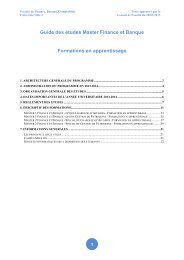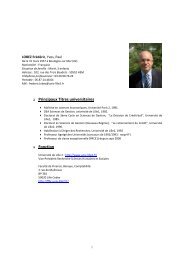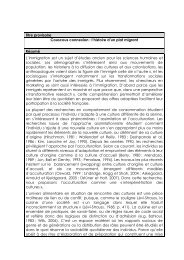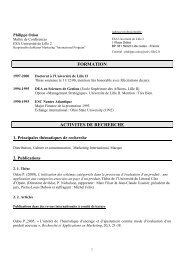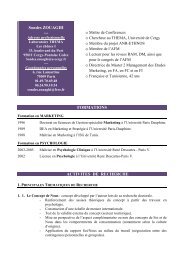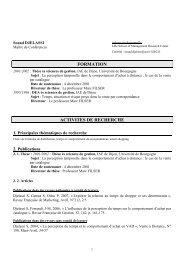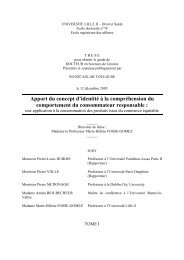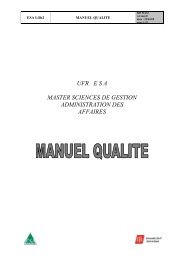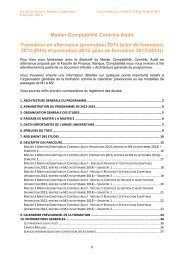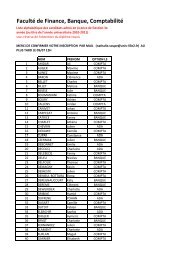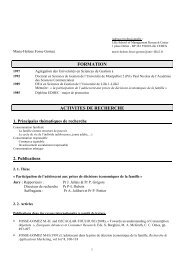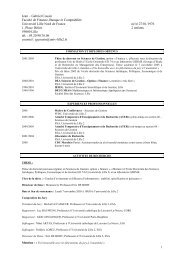Event Study
Event Study
Event Study
Create successful ePaper yourself
Turn your PDF publications into a flip-book with our unique Google optimized e-Paper software.
This means that the ratio of the average idiosyncratic variance between the two time periods (or<br />
geographical zones) must be equal to the ratio of the sample sizes. Table 5, Panel A gives the ratios of the<br />
average idiosyncratic variance in our six non-overlapping sub-periods for the US, as a reference tool for<br />
the reader. These numbers give the ratio of the sample sizes which should be used to allow a fair<br />
comparison of results through time. For example, if the average idiosyncratic variance has doubled, the<br />
sample size should also be doubled. In general, the sample size needs to be multiplied by the ratio of the<br />
idiosyncratic variances. In the same way, Table 5 Panel B displays the ratios of the average idiosyncratic<br />
variance between seven countries. These ratios were computed using the average equal-weighted<br />
idiosyncratic volatility reported by Guo and Savickas (in press). For example, the ratio of the average<br />
idiosyncratic risk in Italy (Average IR = 0.028) and that in Canada (Average IR = 0.139) is 0.20. This<br />
suggests that to have comparable event-study results in terms of power for the same corporate event (e.g.,<br />
an M&A announcement), the Canadian sample needs to include 5 times as many companies as the Italian<br />
sample.<br />
4. Conclusion<br />
Campbell et al. (2001) highlighted the rise in idiosyncratic risk (IR) during the period 1962−1997. The<br />
impact of this observation on the short-term event-study method has not been studied systematically until<br />
now. It raises the question of the extent to which the event-study method is a time-varying measurement<br />
tool. We have investigated this question in this paper. Our two main conclusions are:<br />
― While the specification of Boehmer et al.’s (1991) statistical test is resistant to time variation in<br />
IR, the power of all the event-study approaches investigated here are dramatically affected by the<br />
variation in IR. This result is intuitive: in a noisier environment, detecting abnormal performance<br />
is increasingly difficult.<br />
― A simple solution has emerged from our analysis, which consists of increasing the sample size in<br />
order to compensate for the noise. More specifically, the ratio of sample sizes should be equal to<br />
18



